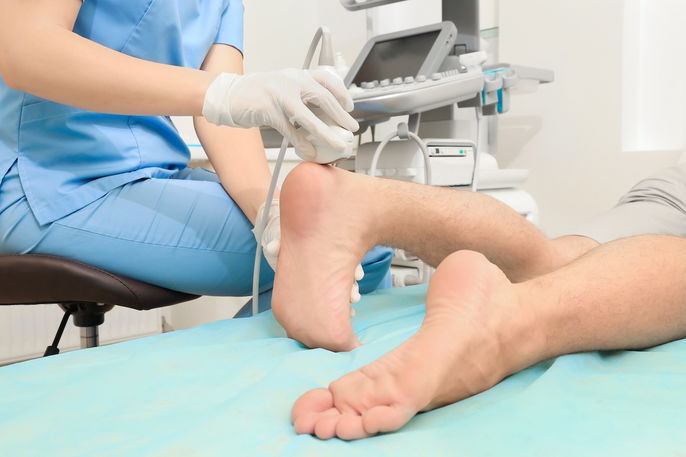An enthesophyte is a bony spur that forms where a tendon or ligament attaches to the bone. An entesis is the location where a tendon or ligament attaches to the bone. Enthesophytes are bony projections that develop at an entesis and are caused by trauma or inflammation. They most commonly occur in the heel.
Symptoms of an enthesophyte can include pain, stiffness, swelling, and redness of the area. Anyone can develop an enthesophyte, but they are more common in people with conditions like arthritis or ankylosing spondylitis. Inflammation and repetitive movements (for example, related to sports) can also result in the formation of an enthesophyte.
Treatment of an enthesophyte includes the use of pain relievers and anti-inflammatories as well as physical therapy. In more serious cases, surgery may be indicated.

Common symptoms
The main symptoms of an enthesophyte include:
- Intense heel pain, especially when standing;
- Swelling or redness of the affected area;
- Difficulty walking;
- Joint stiffness, which is often worse in the morning or after a period of prolonged sitting;
- Decreased range of motion in the affected area;
- Cracking or popping of the joints.
Pain from an enthesophyte can begin as mild discomfort and get progressively worse over time.
Symptoms vary based on where the enthesophyte is located. Most enthesophytes form on the heel, a condition also known as a heel spur.
Prolonged periods of standing as well as high impact exercises like jumping and running can exacerbate the pain from a heel spur.
It is important to contact your doctor if you experience symptoms of an enthesophyte, especially if these symptoms interfere with your activities of daily living. Diagnosis and treatment of an enthesophyte may involve an orthopedic doctor (orthopedist) who specializes in bones.
Confirming a diagnosis
The diagnosis of an enthesophyte is made based on symptoms, medical history, and a physical exam.
Imaging studies such as X-rays, ultrasound, or MRI may be used to confirm the diagnosis and rule out other conditions with similar symptoms, such as fractures, ligament ruptures, or infections.
Doctors may also order additional blood tests to check for an autoimmune disorder if the enthesophyte seems to be the result of an inflammatory response. These tests may include a complete blood count (CBC), HLA-B27 antigen, rheumatoid factor (RF), and antinuclear antibody (ANA).
Also recommended: 8 Common Autoimmune Diseases: Symptoms & Treatment tuasaude.com/en/autoimmune-diseasePossible causes
Risk factors for developing an enthesophyte include:
- Mechanical stress related to sports;
- Lateral or medial epicondylitis;
- Plantar fasciitis;
- Patellar tendonitis (jumper's knee);
- Rheumatoid or psoriatic arthritis;
- Ankylosing spondylitis or spondyloarthritis;
- Gout;
- Obesity.
Enthesophytes are most commonly found on the heel, but they can also affect the hips, knees, shoulders, Achilles tendons, ankles, or tarsal bones (the bones at the back and the top of the foot).
Treatment options
Treatment of enthesophytes usually involves resting the affected limb and taking pain relievers and anti-inflammatories such as ibuprofen or naproxen. A treatment plan should be made in consultation with your doctor.
Corticosteroid injections may be necessary in some cases to reduce inflammation. Physical therapy may also be recommended.
If enthesophytes are the result of an autoimmune disease your doctor will likely refer you to a rheumatologist who can treat the underlying cause.
Surgery may be necessary to remove the enthesophyte if symptoms are severe and are not relieved with stretching exercises and medication alone.






























